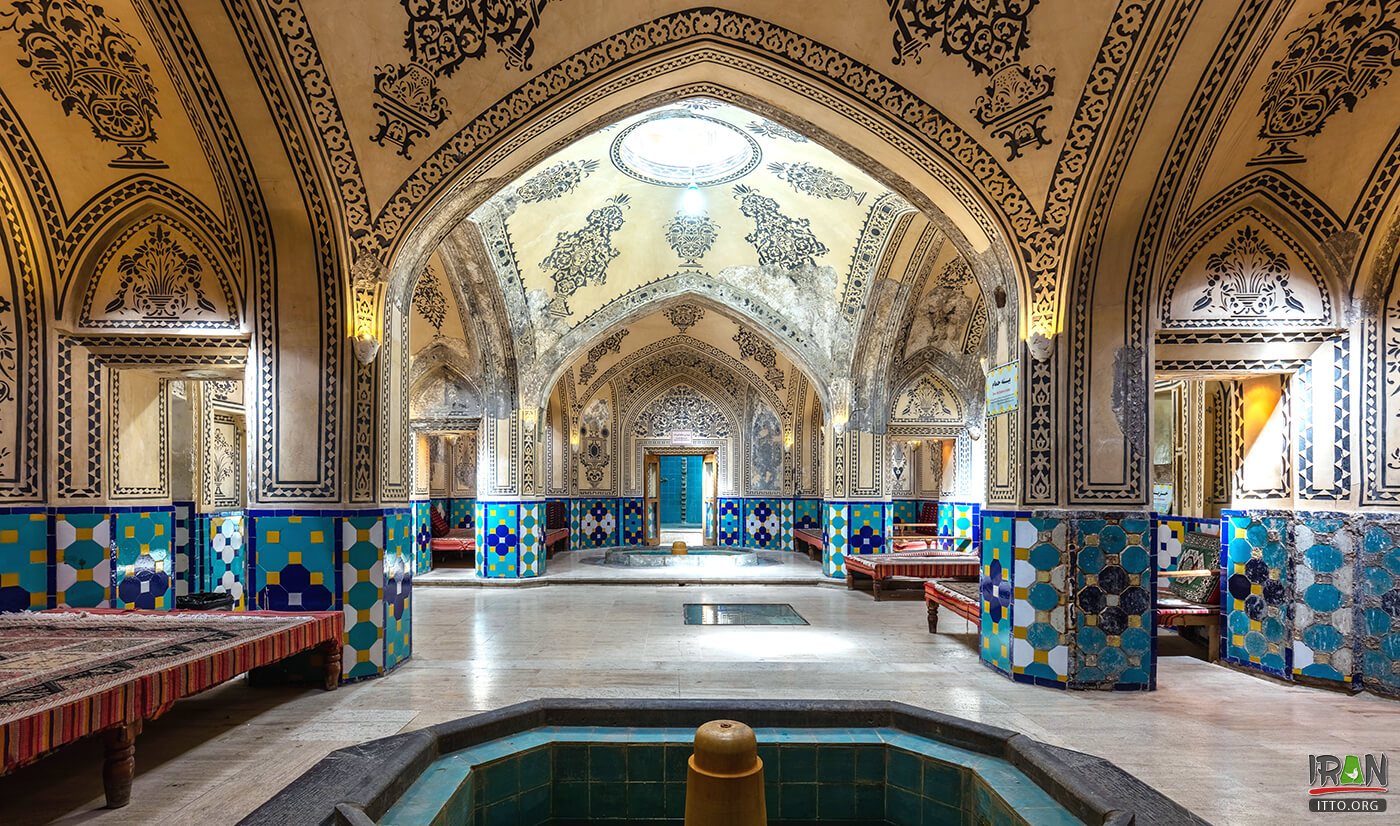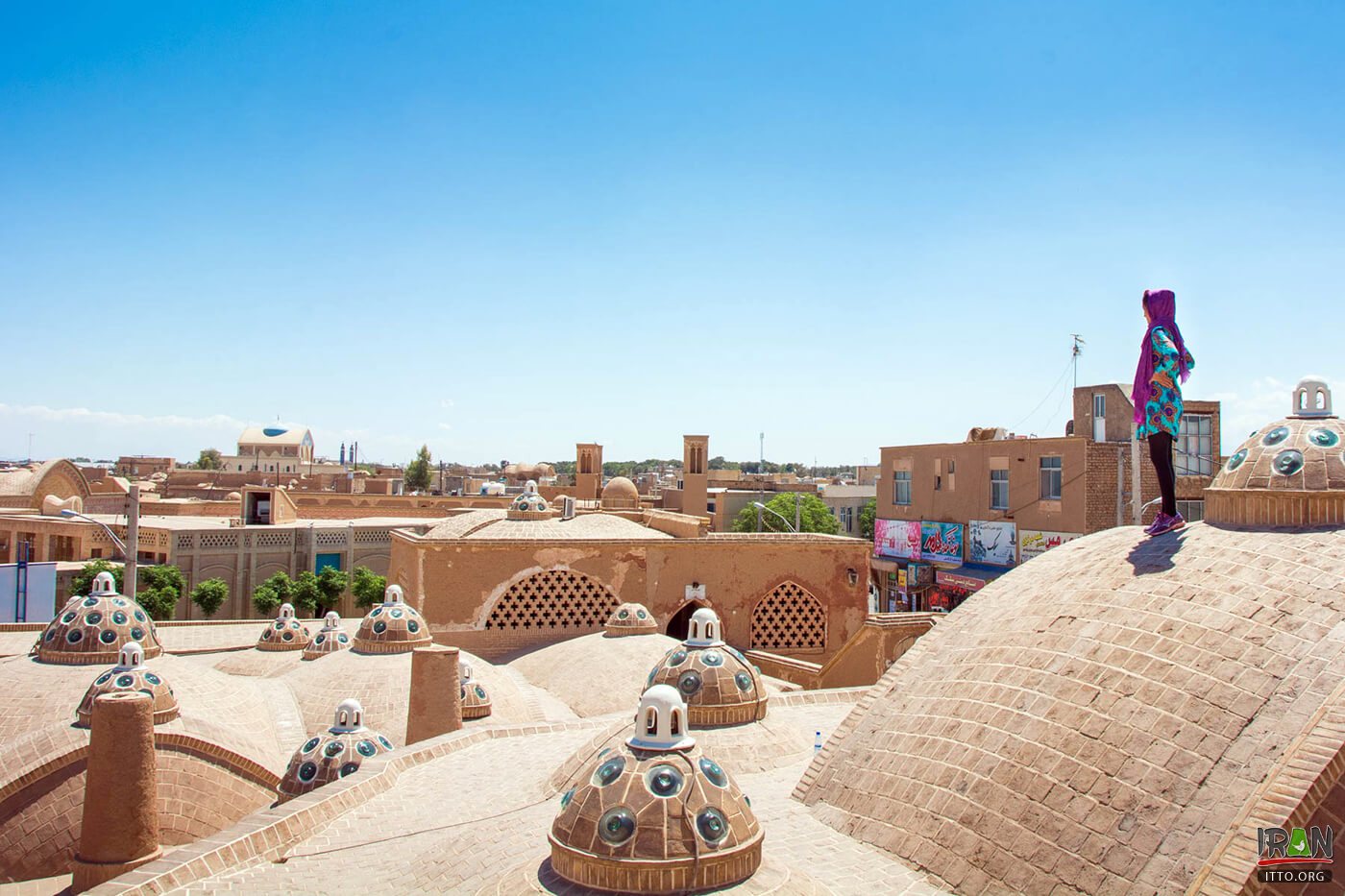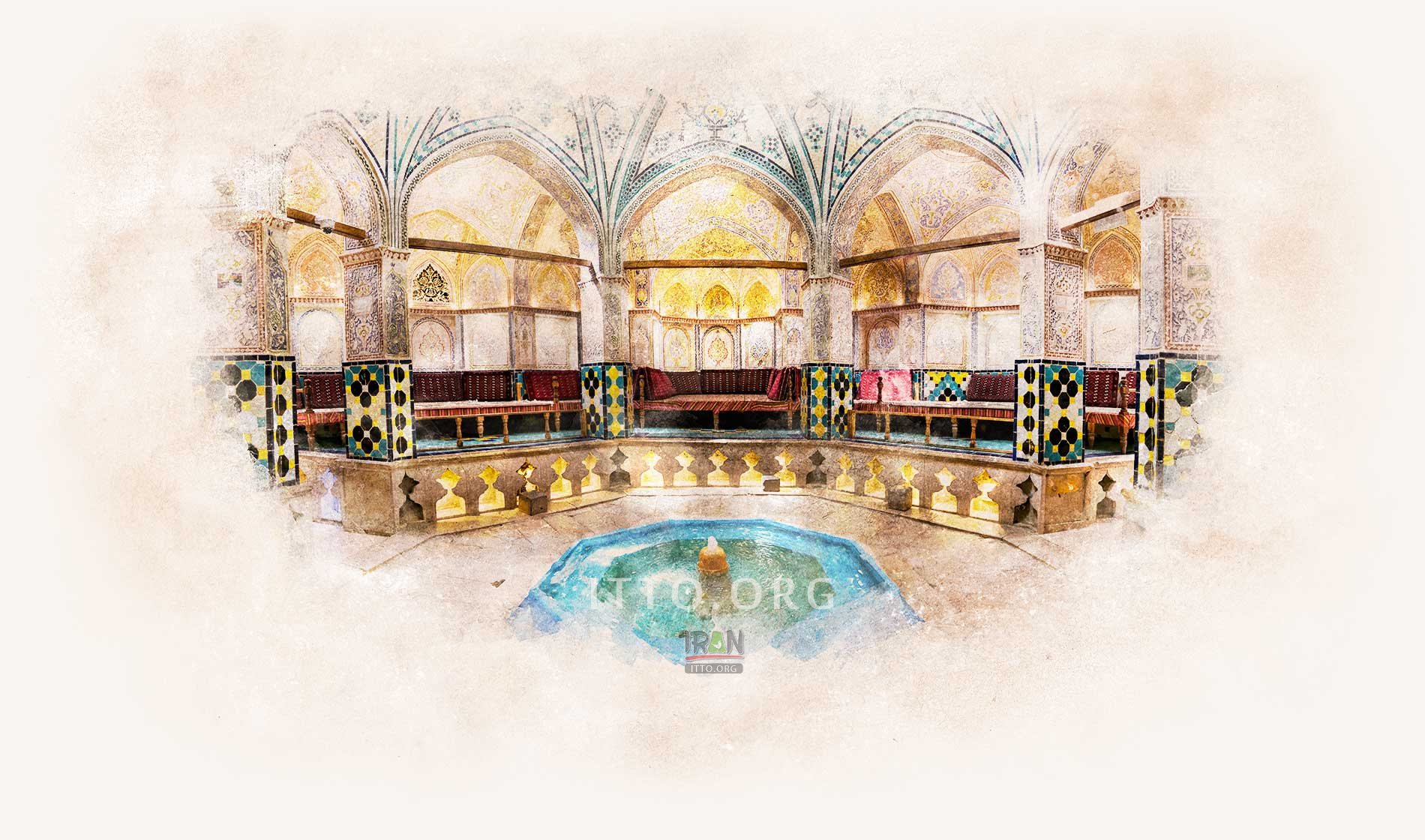Sultan Amir Ahmad Bathhouse (Hammam-e Soltan Amir-Ahmad) also known as the Qasemi Bathhouse, is a traditional Iranian public bathhouse in Kashan. It was constructed in the 16th century, during the Safavid era. Some evidence declared that the construction of this bathhouse dates back to Seljuq Dynasty while some people believe that what we now see as Sultan Amir Ahmad Hammam was actually built in Qajar Dynasty over the ruins of the previous bathhouse.
This Bathhouse (Hammam) is a unique sample representative of Persian architecture and decoration. Located in a historical pole in Kashan, accessibility to many valuable attractions is an easy deed. What makes this structure particular is its rooftop which is a charming and artistic part of the place. It is a tickling subject for many photographers at different times of the year.

This absolutely beautiful monument in Kashan can be the highlight of your trip to this city. This naturally heated bathroom gives you insight into the earlier time.
Elaborately decorated with turquoise and gold tiles, the quiet meditative ambiance of Sultan Amir Ahmad Bathhouse evokes its past as an important public gathering place. The 16th-century hammam (named after a sultan who was buried in a nearby mausoleum) features an octagonal dressing area (Sarbineh) and a hot bathing hall (Garmkhaneh).
It was restored on two occasions: after 1778 earthquake and in 1996. Take a self-guided tour through the hamam, and visit the rooftop to see many small domes and scenic views of the surroundings.

You can see one of the wonders of the city of Kashan with its beautiful roof which provides you with an overview of Kashan city.
In the past the Bathhouse has been used as a traditional teahouse although today it serves as a museum. In 1956 the Sultan Amir Ahmad Bathhouse was registered as a national heritage site by Iran’s Cultural Heritage Department.
Many ancient attractions are nearby and therefore there is an easy access to all these sites. For instance, Agha Bozorg Mosque, Abbasian Historical House, Tabatabaei Historical House, Boroujerdiha Historical House, and Toy Musem are all around this old structure.


